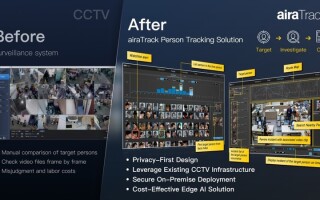2014 Most Influential Women: Limor Fried, Founder, Adafruit
June 01, 2014
Limor "Ladyada" Fried is a MIT engineer, open source hardware and software pioneer, and entrepreneur. She is the founder of the educational electronic...
How did you get involved in embedded technology? Who or what was your inspiration to pursue a STEM career?
I got excited to learn embedded technology while an undergrad researcher at the Media Lab at MIT – we were doing sensor and actuation interfaces using PIC microcontrollers. At the time, accelerometers were really expensive, but also very futuristic. It was cool to see how these space technologies were easy to use and could be programmed in C or Assembly, something I was familiar with from doing Computer Science.
What would you say to girls and women to encourage them to get or stay involved in STEM education/careers? Why do we need more women in embedded computing fields?
There's never been a more fun time to get creative using electronics. And if you're interested in other sciences such as biology, medicine, chemistry, and others, electrical engineering is going to be more and more important. My friend Amanda uses her electrical engineering skills to design electronic heart valves for babies with birth defects. She's building cyborg babies!
What are the largest obstacles to innovation in the embedded realm, and how should those challenges be solved?
I really wish more chips had full cross-bar technology. On one hand, I understand that its cheaper and easier to just assign some pins strict functions but I love the idea of being able to change pin functions from analog to digital to timer on the fly.
How do you recognize when a new technology or application is one your company should invest/innovate in, versus a technology that will experience fast burnout?
I go with a gut instinct a lot – is it fun for me? I'm always hesitant when I see new tech because it's a lot of effort to write tutorials and learn the core. But it isn't about price for me – the best technologies are disruptive in terms of doing something so much easier than ever before. It's the lack of friction that is most important, and that often doesn't correlate with MIPS. Sometimes it's something as simple as availability of a really good, cross-platform, free (as in speech) compiler. That's what pulled me to AVR from PIC.
In the next 5 years, which embedded technologies, applications, markets, and geographic areas present the most interesting opportunities?
Wearables! We've recently rolled out a couple wearable platforms, FLORA and GEMMA, that allow makers to create wearable sensor projects as well as bringing in non-technical users in to electronics since the projects are often sewable versus soldering required. More people in the world can sew and do crafts than electronics; we think this is a good strategy to pursue.





